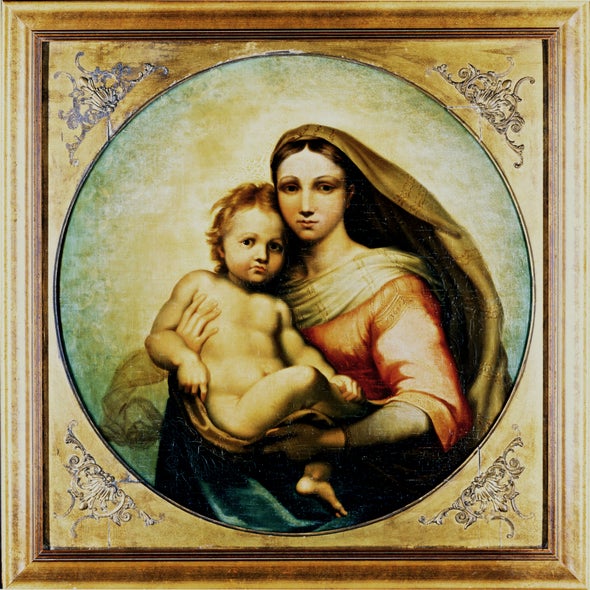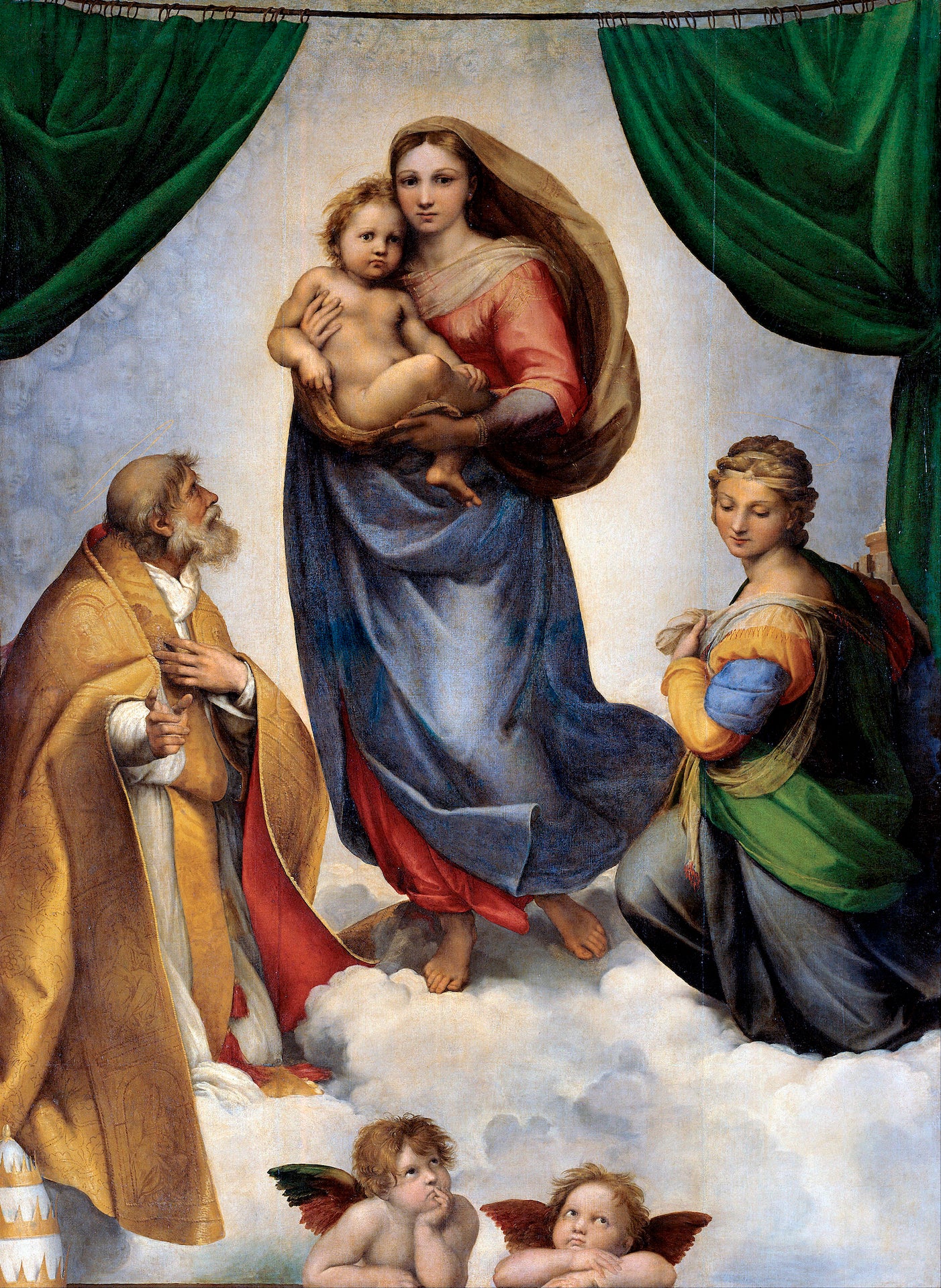A mysterious portrait of the Virgin Mary and Jesus may have been painted by the master Raphael, facial recognition finds. But many art historians reject the claim
Thank you for reading this post, don't forget to subscribe!
Many art historians, however, insist the Tondo is the result of another painter copying one of Raphael’s most famous works, the Sistine Madonna. He painted the latter around 1513 for the church of San Sisto in Piacenza, Italy. But since the 18th century, the Sistine Madonna has primarily hung in palaces and museums in Dresden, Germany.
The new analysis has not convinced everyone. Instead it is the latest round in a 40-year debate about the origins of the Tondo, which art collector George Lester Winward bought in 1981 from an aristocratic family with connections to Queen Henrietta Maria, the wife of England’s King Charles I. Before his death, Winward set up a trust to preserve his art collection and make the pieces available for study. Before the new finding, an examination of the Tondo’s pigments with Raman spectroscopy and x-rays, as well as historical research, had suggested Raphael might have painted it. But many experts disputed the attribution.
For the most recent look, the researchers used an artificial intelligence system known as a deep neural network, which had been trained for months in facial recognition. The program examined thousands of aspects of the faces in the Tondo and the Sistine Madonna, including their proportions, colors, textures and shading—“all of this and more,” says Hassan Ugail, a professor of visual computing at the University of Bradford in England, who performed the analysis.

According to the AI, the faces of the Madonna in both paintings are 97 percent similar, while the faces of the child are 86 percent similar. Such high correspondences show both paintings were made by the same artist, Ugail says. “I cannot be 100 percent sure,” he adds, “but the chances are very, very high.”
Many art historians remain unconvinced, and they suggest the Tondo’s exact resemblance to the Sistine Madonna is telling. “It’s not in any interesting way a variation,” says Cammy Brothers, who researches Italian Renaissance and Mediterranean art and architecture at Northeastern University. “This is a later copy after Raphael rather than a painting by him or even one of his disciples,” she says.
Art historians Nigel Ip, based in London, and Lisa Pon of the University of Southern California agree. Ip objects that the AI only examined surface similarities. “Artist attributions also need to consider social and historical factors,” such as workshop practices or anachronisms in the use of materials, and the AI can’t do that, he says.
Furthermore, the Renaissance was “a culture of copying,” Pon says. “Raphael’s works were often copied, even in his lifetime.” And the earlier spectroscopic analysis of the Tondo, which found traces of pigments used in the 16th century, might have actually detected a later copy that had used 16th-century pigments to look authentic, she says.
Timothy Benoy, honorary secretary of the trust that now owns the de Brécy Tondo, has heard such objections before. But he’s confident Raphael created the Tondo, perhaps even before he started the Sistine Madonna. Both the works, Benoy says, were painted on canvas, which Raphael was unfamiliar with at the time. Instead the artist more often painted on the plaster of frescoes or on paper or vellum—parchment made from calfskin. “Raphael would have needed to rehearse painting on canvas, and the Tondo would have been an opportunity,” Benoy says.
For now, the de Brécy Tondo is locked away. But the next stage of the effort to verify its authenticity will be to invite inspections by art experts, Benoy says.
ABOUT THE AUTHOR(S)
Tom Metcalfe is a freelance journalist who is based in London. Metcalfe writes mainly about science, space, archaeology, Earth and the oceans. He has also written for Live Science, the BBC, NBC News, National Geographic, Air & Space and many others.

